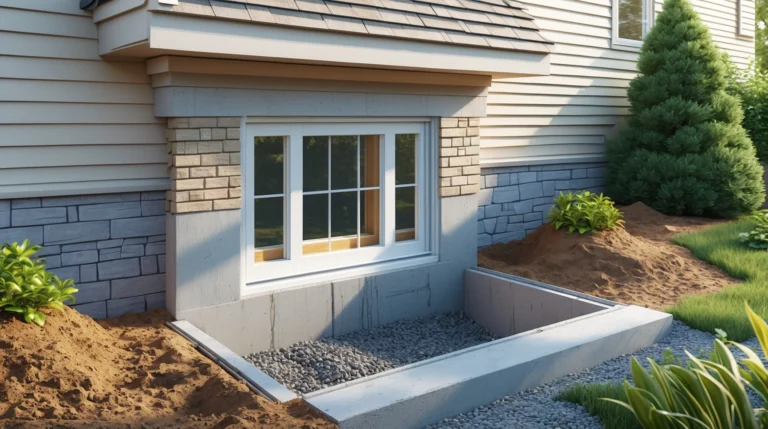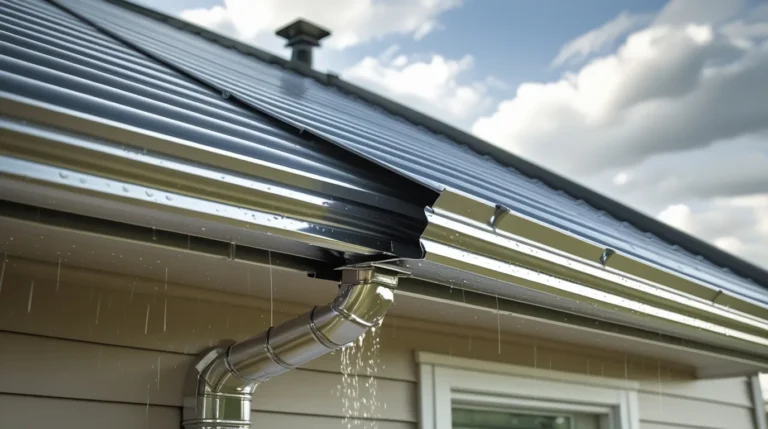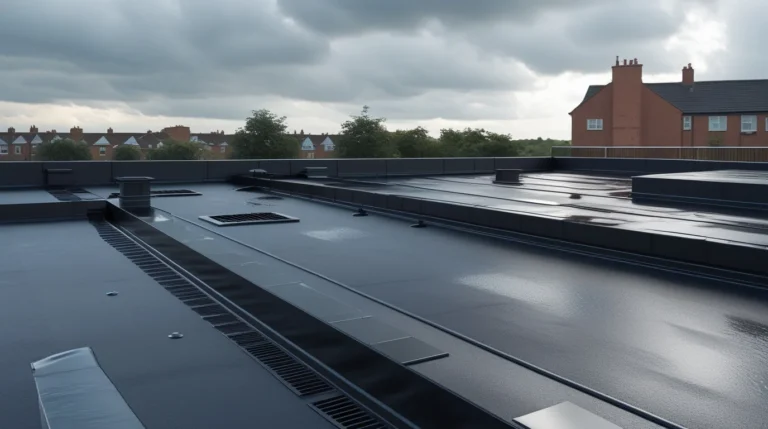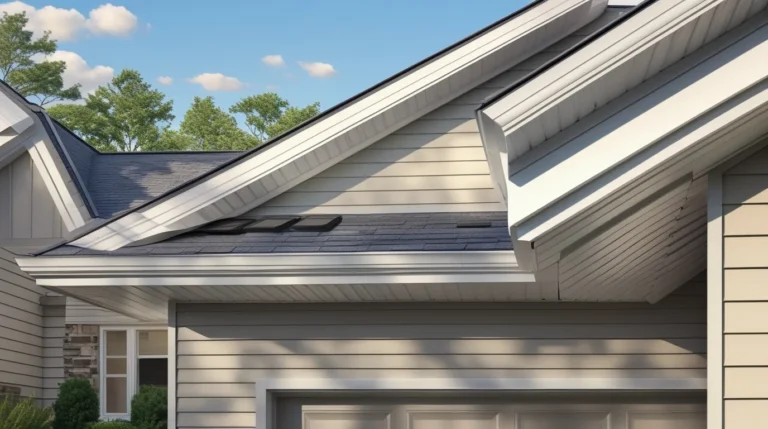Flat Roof Drainage Design Guide
A flat roof may look simple, but it needs a well-planned system to get rid of rainwater. Without it, water can build up fast and cause damage. In this flat roof drainage design guide, we’ll explain everything you need to know to keep your flat roof safe and dry. Whether you’re building new or upgrading an old system, good drainage is key. Port Solutions DMV understands how important this is, especially for homes and buildings that face changing weather.
Why Flat Roofs Require Thoughtful Drainage Solutions
Unlike sloped roofs, flat roofs don’t allow rain to run off naturally. If the water has nowhere to go, it sits, forming puddles. These puddles, also called ponding, can damage the roof over time. That’s why you need a proper roof drainage system. Flat roof drainage helps water flow off safely, keeping the structure strong and leak-free.
If you don’t have a good flat roof drainage system, the water might find its own way into your home or building. Over time, this leads to leaks, mold, and even damage to walls and ceilings. So, designing the drainage early is very important.
What Happens When Water Sits on a Flat Roof
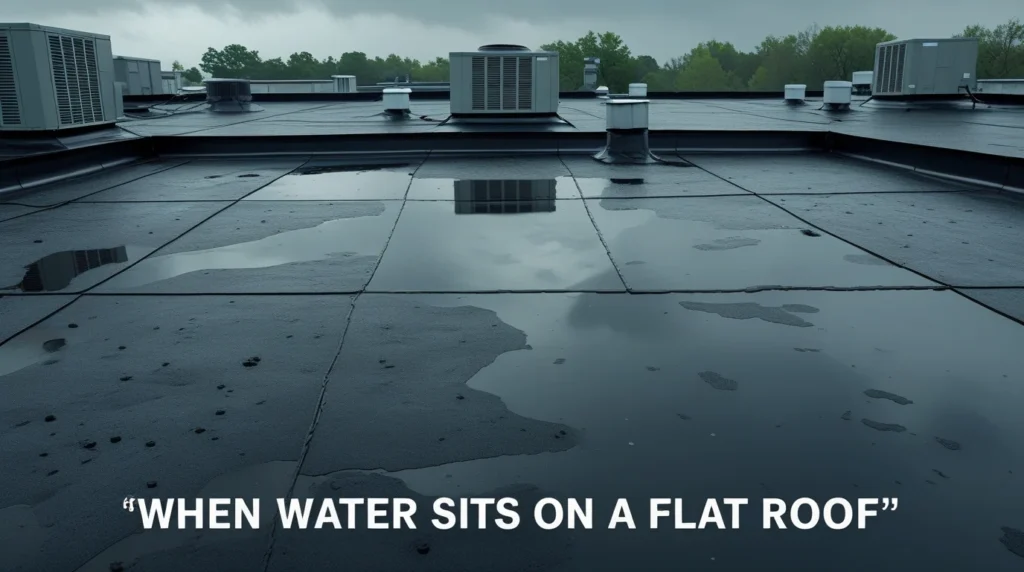
Water sitting too long on a flat roof can cause problems like:
- Roof sagging
- Mold and mildew growth
- Cracks in the structure
- Interior leaks
This water accumulation on a flat roof is called ponding. It means water is not draining properly. A strong flat roof water drainage plan helps prevent this. It also keeps your home safe from future repairs. The longer water sits, the more damage it can cause. That’s why having a good rooftop drainage system is a must.
A Flat Roof Drainage Design Guide for Homeowners
This flat roof drainage design guide is meant to help homeowners and building owners understand how roof water drainage works. Whether you’re installing a new roof or fixing an old one, drainage must be a part of the plan.
There are many parts of a flat roof drainage system. Each part plays a role in making sure water leaves the roof quickly and safely. A complete plan will include the roof slope, drains, gutters, and downspouts. Some designs also include an interior roof drainage system, especially for bigger buildings.
Always consider the size of your roof, the amount of rain in your area, and your building’s structure. Port Solutions DMV always recommends working with professionals when building or upgrading your flat roof drainage plan.
Types of Drainage Systems for Flat Roofs Explained
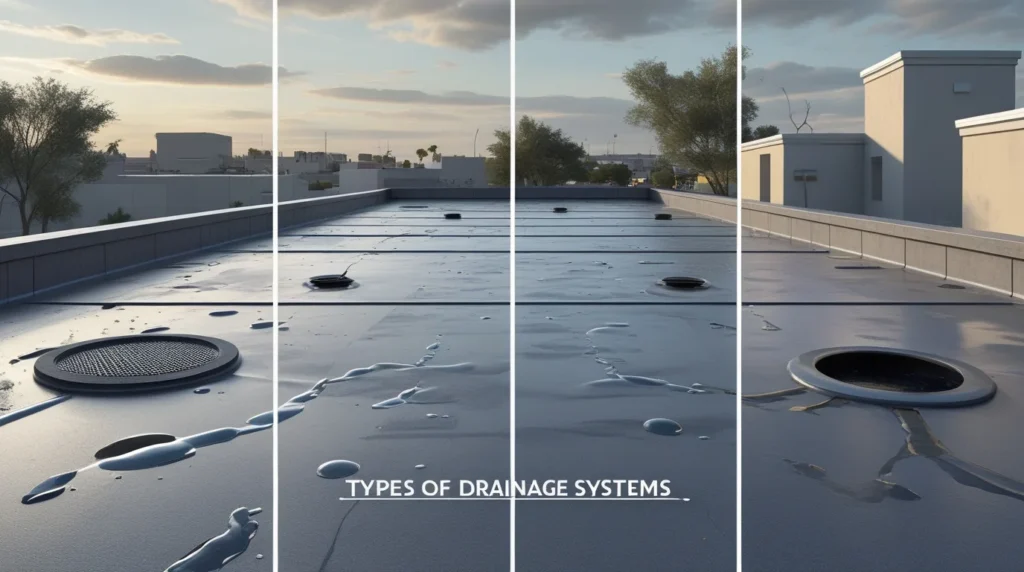
There are a few common ways to drain a flat roof:
1. Interior Drains
These are placed in the center of the roof. Water flows into the drains, then through hidden pipes down the building. This interior roof drainage system keeps everything out of sight and safe from freezing.
2. Scupper Drains
Scuppers are openings at the edge of the roof. Water flows out through them and into connected downspouts. This is common in residential flat roof drains.
3. Gutters
Gutters collect water from the edges of the roof and move it to the downspouts. A flat roof gutter system is easy to install and works well for homes.
4. Canale Drains
These are similar to scuppers but usually found in Southwest-style homes. A flat roof canale lets water drain through a small spout that sticks out of the wall.
Each system works in different ways. Your choice depends on the building design, weather, and cost.
Planning a Smart Flat Roof Drainage Layout
Before installing anything, you need a roof drainage plan. This layout should show where each drain, gutter, and pipe will go. The roof should be sloped gently about 1/4 inch per foot so water flows to the drains. This is how to slope a flat roof for drainage.
Make sure there are enough drains to handle heavy rain. Too few drains can lead to ponding. The roof plan drainage should include backup drains too. If one gets blocked, the water can still escape.
Also think about where the water goes after it leaves the roof. Roof runoff drainage needs to be directed away from the foundation. Downspouts should lead the water far enough from the building.
Key Parts of a Reliable Roof Drainage System
A working roof drainage system includes:
- Flat roof roof drain detail: Shows how drains connect to the roof membrane and piping.
- Roof water channels: Small paths built into the roof surface to guide water.
- Roof channel drain: A long, narrow drain for collecting water along a section of roof.
- Overflow drains: Extra drains that activate when the main ones are full.
All of these details help prevent water from sitting on the roof. They keep the system working during heavy storms or when debris blocks part of the roof.
Residential Flat Roof Drainage Solutions That Work
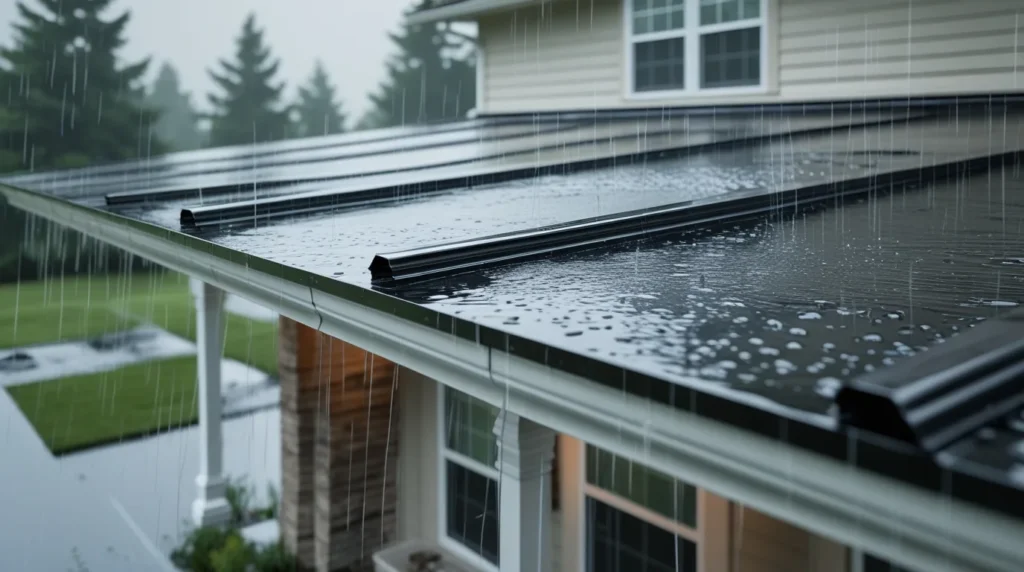
For houses, simple systems are usually enough. A basic residential flat roof drainage setup might include scuppers, gutters, and downspouts. This works well for smaller roof sizes.
If your home has a larger flat roof or gets lots of rain, you may need multiple drains. Flat roof drains residential designs often include interior piping or wider scuppers. House roof drainage must be designed to move water quickly and away from the home.
Vinyl or metal gutters with proper slopes can help a lot. Just make sure to clean them often. Clogged gutters are a big reason roofs leak.
Gutters, Downspouts, and Internal Channels for Flat Roofs
Gutters are key for flat roof water drainage. They catch water and lead it into downspouts. A flat roof gutter detail will show how they attach to the edge of the roof.
Downspouts carry the water down and away. A downspout for flat roof drainage should be wide enough to handle heavy rain. You can also install flat roof downspouts at each corner of the building.
Some buildings use an internal gutter system flat roof setup. This hides the gutters inside the roof’s structure. It’s a cleaner look but needs proper waterproofing.
If you live in a cold area, make sure your system won’t freeze. Ice buildup can block the water and damage the roof.
Modern Flat Roof Drainage for Long-Term Protection
Modern flat roof drainage uses new materials and smart designs to make systems last longer. Flat roof drains design often includes filters or grates to block leaves. These reduce clogs and cut down on maintenance.
Some roofs also include sensors to check for pooling water. These tools alert you when something is wrong. Newer systems might include wider drains, smoother piping, and better slope layouts.
Flat roof canale designs, while simple, are being updated too. Builders now add better lining and angled spouts to keep walls dry.
Choosing the right flat roof drain design means fewer repairs and a longer roof life.
Trusted Flat Roof Drainage Experts in Stafford, VA
If you want peace of mind, it’s best to work with experts who know drainage inside and out. Port Solutions DMV has years of experience designing flat roof drainage systems that work for both homes and commercial buildings. We offer trusted solutions, detailed planning, and expert installation tailored to your property.
If you’re in Stafford, VA, and need a smart, long-lasting drainage setup, we’re here to help.
Ready to protect your flat roof from future damage? Talk to Port Solutions DMV today and get a drainage system that’s built to last.

